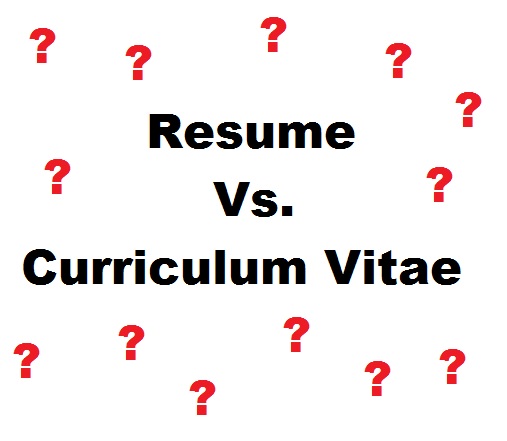Resumes and curriculum vitae (CV) are terms sometimes used interchangeably, but it is essential to know the differences between the two.
A resume is basically a summary of your education and your work experience that is relevant to the job you are applying for. This work experience is listed in reverse chronological order. Resumes can be tailored based on the jobs you are seeking and often people have more than one resume if they have experience and interests in several different fields. Standard wisdom calls for resumes to be one page long, but it is sometimes appropriate to have a two page resume – especially in recent years, when more and more people move from one job to another much more frequently than they had in the past. However, a resume should not exceed two pages.
Curriculum vitae is Latin for “course of life.” A CV encompasses more information about your experience and accomplishments than does a resume. In a CV you can list the publications where your work has been published, awards you have won, accolades you have earned, and other notable information. You can also go into more detail about your education and extra curricular experience – particularly if this information is relevant to the position you are seeking. Also included on a CV are summaries of teaching and research experience, presentations you have given, and your professional affiliations or memberships. Although CVs are expected to be longer than resumes, sometimes employers prefer CVs be limited to two pages. Unlike resumes, CVs remain static. When submitting a CV, it is essential to tailor your cover letter to fit the job. This is also a good policy when it comes to submitting a resume.
In the United States, resumes are typically submitted for job applications and CVs are reserved primarily for positions in academic, research, education, or scientific fields. CVs are also sometimes used when applying for grants and fellowships. In Europe, Africa, Asia and the Middle East, it is expected that job applicants submit their CV to prospective employers. Policies on this vary worldwide – the British typically submit CVs, Americans submit resumes, and Australians often submit both.
We hope this post helped cleared up some of the main differences between a resume and a CV. Feel free to contact us at any time to help clarify anything else for you.
Submitting a resume or CV is the first step in the job search process. Once your documents are reviewed, if your qualifications match what the company is looking for, the appropriate personnel will contact you to arrange a telephone or in-person interview. It is important to remember that most employers or recruiters will take approximately one minute to look over your documents, so whether you submit a CV or a resume, make sure the format and wording makes you stand out from the other applicants.




